This question is closely related to this answer from user mark fitzpatrick.
I have a variable list of country code headers in M3# and AB3# (same list) and a variable list of unique "mentions" as rows in A4#. The formulas in M4# and AB4# count the number of times a specific mention from A4# was listed for each country for two questions, "P" and "O" respectively. Each mention is present in at least one of "P" or "O". For each row in columns L and AA, I have a formula to textjoin each row's mention count per country for "P" and "O" separately (if no mentions, then "-"), but this is not a dynamic formula - I have to copy it down the range of mentions each time the range is updated.
I want columns L and AA to instead contain dynamic formulas. How do I update Mark's formula in columns AM and AN to contain country codes like in columns L and AA?
In AM4# and AN4#, I am using Mark's updated formula on my spilled ranges M4# and AB4# which produce the same result as my individual formulas, except without the country codes:
=LET( m, M4#,
rSeq, SEQUENCE( ROWS(m) ),
L, MMULT( LEN(m)--(m<>""), SIGN( SEQUENCE( COLUMNS(m) ) ) ) - 1,
i, MMULT(--( TRANSPOSE( rSeq ) < rSeq ), L ) + rSeq,
IFERROR( MID( TEXTJOIN( ",", TRUE, m ), i, L ), "" ) )
(edited to remove unnecessary intro)


